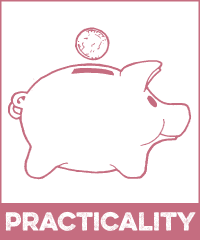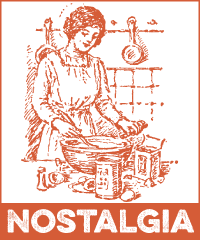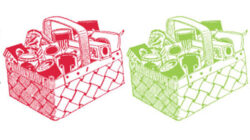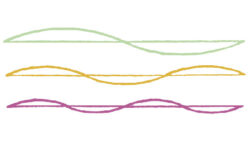Food. Some love it. Some hate it. Most of us have strong feelings about food that run deep and can be complicated, whether we realize it or not. Regardless of our feelings, food is an essential need. This unique combination of need and emotion, when properly analyzed and understood, makes your product all the more attractive and desirable when you leverage it in your messaging.
The first step to understanding your audience is knowing what food means to them and why they buy it. I’ve been studying this for a long time, and I’ve narrowed down the reasons people buy food into 8 major categories. What I’ve found is that consumers often fit into multiple categories. You may find that your product fits into more than one of these categories as well. Take a look at how I’ve broken up these groups and see where your product fits in.

On the most basic level, we need food to survive. We can’t live without it. Some will buy food just to have food to eat, simple as that. Others in this category buy based on money, either eating within a budget or to take advantage of a good deal. Then there is the convenience factor: easy-to-prepare food or heat-and-eat. Often these elements—need, budget, convenience—are strongly linked together.
Factors that speak most to this audience: price point, value, speed, ease, taste. This audience is fairly surface-level in their food selections. Their decisions are simple and based on what they see at face value, and they mainly rely on the front of the package when in the store.

We want what we want when we want it. You know that if you shop hungry you will buy items you hadn’t planned on, and they are most likely to be sweets and snacks. You’re hungry and you see something yummy to eat and you buy it. No surprises there. Even when you’re not ravenous, desire is a huge driver of food purchases: the desire to indulge ourselves or simply to enjoy foods we love. Hunger and taste drivers naturally lead to the impulse buy, especially when the product and packaging visually communicate the essence and experience of the taste contained within.
Factors that speak most to this audience: taste, flavors, ingredients, convenience, satisfaction, indulgence. The better you can communicate the taste experience, the more attractive your product will be. This audience is especially swayed by enticing images on the front of the package and seeing the food itself.

The home cook loves to create with food, and is creating a taste experience, often to join in and share with others. Creating in the kitchen is a journey of discovering and exploring, and this audience enjoys this process. Culinary art shares many of the same creative attractions as other forms of art, but has the added dynamic of being consumed and the experience of tasting, feeling, sharing, enjoying.
Factors that speak most to this audience: ingredients, recipes, results, flavors, versatility. They are going to be focused on certain ingredients, and love recipes and usage suggestions demonstrating how much you can do with the product. Secondary information on the package is especially important in convincing this category to buy the product.

Similar to creating with food and the resulting experience, this audience buys food to give an experience. Either they are buying a food product to give as a gift itself (think holidays/birthdays, thank-yous, hostess gifts), or they are using it to entertain or provide for others (e.g., snacks, desserts, or if cooking then there is crossover with the Creativity category). If they are just buying just because they need to bring something to where they are going (e.g., potluck), or providing just to provide, then they may more fall into the Practicality category.
Factors that speak most to this audience: taste, convenience, uniqueness, novelty, sophistication. They want to impress their audience and are looking for unusual items or ingredients, and products that will perform and are reliable. Quality of product is the highest concern for this category, and for gift-giving, package appearance is an equal concern. Consumers in this group are willing to pay a premium, especially for gift-giving.

The health-conscious consumer is focused on benefits, clean ingredients and nutrition. They scrutinize labels can be convinced by certain key ingredients. They know that eating well means feeling well, and they are loyal to brands that understand their lifestyle. It’s often the supporting information that clinches the sale for this sector, especially if your language speaks in a way that shows you understand them. They are not easily swayed though, and see right through products that try to claim they are healthy but really aren’t.
Factors that speak most to this audience: nutrition, ingredients, product health benefits, and callouts such as organic, non-GMO, gluten-free, naturally sweetened, etc. This is very much a lifestyle category that goes beyond just food. This group is willing to pay a premium but is all the more convinced by a good price point. They are willing to try new and unusual health foods.

Closely linked with the Desire category, Flavor stimulates the taste buds which often leads to Desire. The better your package communicates the flavor and taste of the product—both visually and descriptively—the more convincing it is to buy. You can reinforce key flavors such as fruits or herbs by showing that image on the package. This is what makes the key mind-taste connection subconsciously. Flavor also has crossover with the Nostalgia category (certain flavors and smells can easily draw up positive images from the past), and with Creativity (doing new things with favorite flavors).
Factors that speak most to this audience: taste, ingredients, nostalgia, experimentation. Front of package is very important to this group, as is supporting copy and details about the product.

Many consumers have or have had negative feelings toward food, and there are many for whom food is an ongoing struggle. They may have experienced eating disorders, weight issues, eating as a coping mechanism, or even just a feeling of guilt from indulging. Food may have a bad or shameful connotation to these consumers, and their relationship with it can be particularly complex. Foods that make it easy to eat healthy and make good decisions about food can be especially attractive, as are healthy or healthier indulgences
Factors that speak most to this audience: taste, key health benefits, easy-to-interpret information. It’s best to keep your message simple and positive. Health and nutrition statements let them know your product is a good choice. Statements about bad ingredients your product does not contain can be helpful selling points as well.

More than anything else, our upbringings largely determine our relationships with food and fond memories remain especially strong over time. Family traditions, comfort foods, and memories of good times involving food are all powerful in the conscious and subconscious. Additionally there may be memories of cooking in the kitchen with family, and time spent together at meals around the table.
Factors that speak most to this audience: taste, tradition, simplicity, comfort, wholesomeness. Products with classic and timeless looks are attractive to these consumers, reinforcing the feeling of comfort, tradition and nostalgia. The supporting copy is important in creating the connection with the memories of the past.
Now that we’ve reviewed each category, here are a few questions for you to consider. Where do YOU see your product in these categories?
What kind of experience does your product create? Are you emphasizing the right selling points to effectively market your product? You can’t be all things to everyone, so know what’s most important to your top audience and remember to speak to that. If you can reinforce secondary aspects to include other audiences and/or selling points, then by all means do so—just not at the sacrifice of watering down your key points or obscuring the message.
If you want to dig even deeper into your brand, try out our our free guide, How To Make Your Gourmet/Specialty Brand Rock, and schedule a free workshop session with us.





Well thought out article, and very well written. Enjoyed reading it!
Great it’s really wonderful thought process to write such article and motivation
Thanks
Always relevant and interesting to read. Thank you!